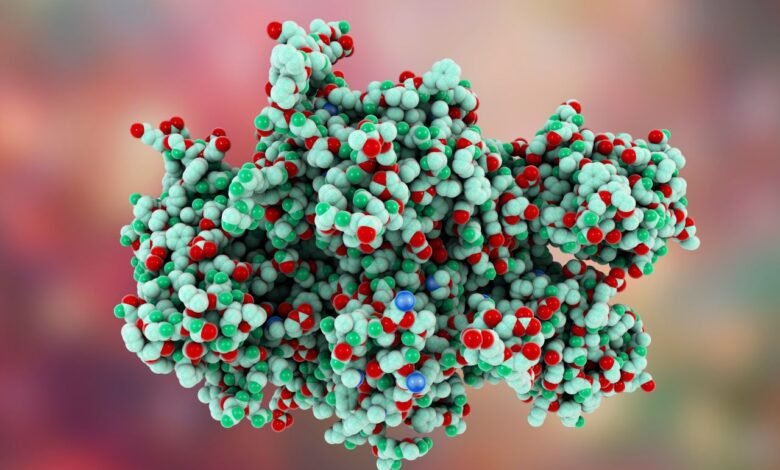vWD Market Growth Driven by the Increasing Use of Recombinant vWF

According to GlobalData’s recent von Willebrand Disease (vWD): Opportunity Analysis and Forecast report, the vWD market is expected to see significant growth during the 2022–32 forecast period. The three major markets (3MM: US, Germany and the UK) will increase in size from $893m in 2022 to $2.04bn in 2032, at a compound annual growth rate (CAGR) of 8.6%. This sales growth will be in line with the steadily increasing disease prevalence and the entrance of novel agents into the market. There are two therapies in the late-stage pipeline. BT-200 is an aptamer-based therapy with a novel mechanism of action that is designed to specifically treat type 2M vWD and is forecasted to launch in 2028 with sales of $221.08m across the 3MM by 2032.
The second, recombinant von Willebrand Factor (vWF), is currently marketed for adults as Vonvendi in the US and Veyvondi in the EU but is in Phase III in the US for pediatric use and pre-registration for pediatric use in the EU. It is forecast to launch in 2026 in the US and 2024 in the EU, with sales of $282.98m for pediatric use and a total of $740.15m for both adult and pediatric use across the 3MM. Market growth will be primarily driven by the increasing use of recombinant vWF (Vonvendi/Veyvondi) as it has been demonstrated to treat most subtypes of vWD efficaciously for either prophylaxis or on-demand treatment.
vWD is the most common inherited blood-clotting disorder, although it is still regarded as a rare disease. It arises from a deficiency in the quality or quantity of vWF, a multimeric protein that is required for platelet adhesion. There are three types of hereditary vWD: type 1, type 2 and type 3 – of which type 2 contains various subtypes (2A, 2B, 2M and 2N). vWD type 1 is the most common form of the disease, with mild bleeding symptoms such as epistaxis. Type 2 (2A, 2B, 2M and 2N) is the second most common type of vWD and has mild to moderate symptoms; type 2N has symptoms like those of hemophilia.
The diagnosis of vWD is based on the levels of vWF antigen, the vWF activity assay and FVIII coagulant activity. Results are analysed in the context of blood group and vWF multimer analysis is essential for typing and subtyping of disease. Disease management involves replacement therapy, non-replacement therapy and others such as antifibrinolytics and topical agents.
During 2022, there were several drug classes on the vWD market: plasma-derived FVIII, plasma-derived vWF, vWF (recombinant), DDAVP and (coagulation factor VIIII + vWF (human)) complex. With 12 branded therapies currently marketed in the class, the total 2022 market share was $892m. By 2032, vWF recombinant (Vonvendi) for pediatric use and BT-200, an RNA oligonucleotide therapy, are expected to have obtained a 10% market share, with the likelihood that they will function in addition to the established coagulation factor VIII + vWF complex drugs. The vWD therapies have all passed their patent expiration dates, so their market shares are expected to steadily decline in the second half of the forecast period as novel therapies launch, particularly from 2025 onwards.
From 2027 onwards, the launch of recombinant vWF (pediatric) and BT-200 is expected, with a significant market share of 17% gained from incumbents in 2031, as the therapies will likely have a high cost and a relatively large patient population in vWD. Collectively, these two therapies have a forecasted total sales value of $503m by 2032 across the 3MM. This is approximately 25% of the total vWD market value across the 3MM in 2032.
However, the pricing of recombinant vWF therapy and (the coagulation factor VIIII + vWF (human)) complex will likely hinder access to therapy due to the cost and facilities required for administration. The cost-to-benefit ratio and QALYs (quality-added life years) that recombinant vWF provides will be significant driving factors for achieving reimbursement and coverage.
RNA oligonucleotide therapy has yet to undergo Phase III trials in vWD, so the full benefit of these therapies has yet to be observed clinically for severe vWD. If vWF recombinant therapy can demonstrate significant efficacy in treating severe vWD cases in adults and children, it will obtain a large market share. The same holds true for BT-200 if it can improve outcomes for type 2 vWD and prevent severe bleeds from angiodysplasia and epistaxis.
Source link
#vWD #Market #Growth #Driven #Increasing #Recombinant #vWF